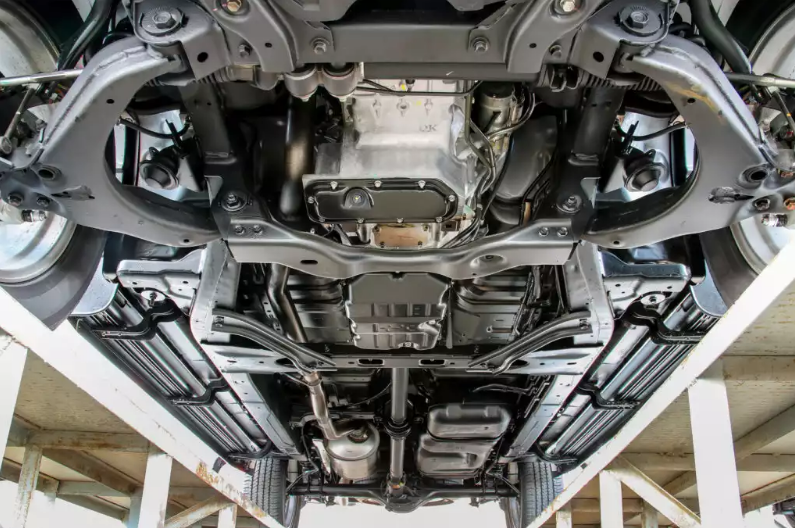Views: 203 Author: Site Editor Publish Time: 2023-12-27 Origin: Site

A crossmember is a steel or aluminum bar that runs across the vehicle to support the transmission. It’s usually part of vehicles with a unibody design.
Symptoms of a damaged crossmember include creaking or squeaking noises from the chassis, abnormal gaps in door openings, and uneven tire wear. Driving with a damaged crossmember will cause a few drivability issues.
Crossmembers and subframes are both essential suspension system parts. The crossmember is smaller and mainly supports the transmission. Other components and principles in the suspension system include frames, frame construction types, platforms, and unsprung weight.
A crossmember might not be the first thing on your mind when it comes to suspension components, but it does play a huge part in your vehicle’s drivability.
What Is a Crossmember on a Car?
A crossmember is a steel or aluminum bar that runs across the vehicle to support the transmission. It’s strong enough to resist twisting and deflection, bearing the forces and torque of the transmission.
Typically linked to the engine mount, the crossmember also keeps the suspension system stable. In some transverse engines, the transmission mount can also be mounted to the subframe.
In some transverse engines, the transmission mount can also be mounted to the subframe.
A car’s front crossmember also has load-bearing capacities for towing functions. It was originally made with 5 meters of weld length, but extreme heat is most likely to affect its final dimensions.
A crossmember is usually part of vehicles with a unibody design. These vehicles have the body constructed with the structure of the frame.
A crossmember is strong enough to resist twisting and deflection, bearing the forces and torque of the transmission.
Symptoms of a Damaged Crossmember
A damaged crossmember can cause your vehicle to exhibit the following symptoms:
Creaking or squeaking noises from the chassis
Abnormal gaps in door openings
Uneven tire wear
Misaligned wheels
Additional force to the doors
Drivability and shifting issues
Driving With a Damaged Crossmember
You’re bound to experience a few drivability issues when you have a damaged crossmember.
The damaged component can throw the wheel alignment off, making it difficult to drive straight.
The crossmember is also a supporting component. Without it, the coils, struts, and shock towers could get bent and wear out prematurely. The transaxle is also at risk of getting twisted.
Crossmember Replacement
The cost to replace a damaged crossmember will mostly depend on factors like your vehicle’s specifications, the crossmember’s brand, material, location, and finish.
Crossmembers vs. Subframes
Both the crossmember and subframe play critical roles in supporting major engine and transmission components, and both are essential suspension system parts.
However, the crossmember is a smaller structure than the subframe (depending on whether the engine is transverse or longitude-mounted), and its main priority is to support the transmission.
Meanwhile, the subframe supports the axle, suspension, and powertrain. It’s also referred to as the “cradle.”
The subframe also acts as a mount structure in the suspension, reacting to cornering, driving over bumps, accelerating, and braking.
A subframe can be found in the front, rear, or both sides.